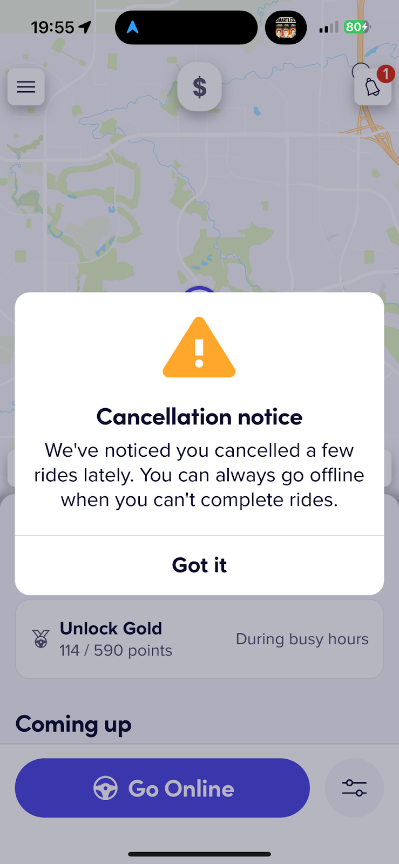Uber and Lyft have long dominated the rideshare industry, each with unique features aimed at improving the experience for drivers and passengers.
However, despite their successes, both companies still have room for improvement. As a driver who has completed over 31,000 rides, I’ve experienced firsthand the strengths and weaknesses of both platforms.
This article explores five features that Lyft should steal from Uber and five features that Uber could steal from Lyft.
If these rideshare giants took a page from each other’s playbooks, they could significantly improve driver satisfaction and efficiency.
Let’s dive into the changes that could make all the difference.
Background
If you are not driving with both Uber and Lyft in your arsenal, you are leaving dollars on the table.
In the current rideshare driving environment, with an over-saturation of drivers and reduced per-ride earnings, drivers must utilize every advantage.
As someone who splits my revenue between Uber and Lyft, I have observed the strengths and weaknesses of each company. Let’s start with Lyft.
What Lyft Can Steal From Uber
1. We Don’t Need Reminders – Got It!
Lyft tends to repeatedly remind drivers when they’re not accepting rides, which can be annoying and disruptive, especially when you’re trying to take a quick break or manage your schedule strategically.
Uber, on the other hand, is much more relaxed about this. Uber’s interface doesn’t constantly nag you about missed opportunities, which allows drivers to feel more in control of their work.
If Lyft adopted a similar approach, it would eliminate an unnecessary source of frustration for drivers.
By letting drivers operate without the constant pressure of accepting every ride that comes their way, Lyft could empower us to make smarter decisions. Sometimes, we need a few minutes to regroup, and that space to breathe makes all the difference in maintaining a steady, productive shift.
2. Consistent Pay Is Better Than Occasional Bonuses
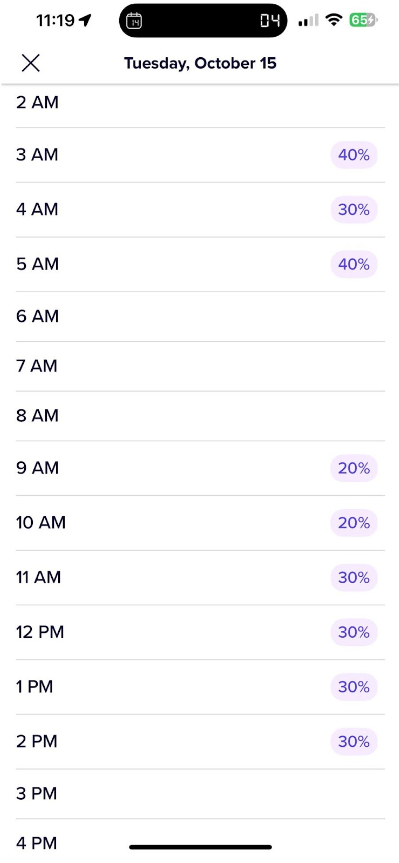
Uber typically offers drivers a more consistent payout structure, which can be a significant advantage.
Lyft’s hourly bonuses may seem attractive, but they are often tied to conditions that make them challenging.
Specifically, the times selected are usually the slowest time, so you may think you will crush it, but you don’t get many rides. This inconsistency in pay makes it hard for drivers to predict their earnings on any given day.
If Lyft adopted Uber’s more reliable pay structure, it would simplify earnings for drivers and reduce the stress of chasing ever-changing bonuses.
Knowing what to expect in terms of pay allows drivers to plan their shifts better and make smarter decisions about where and when to drive.
3. Don’t Force Your GPS System Down Our Throats
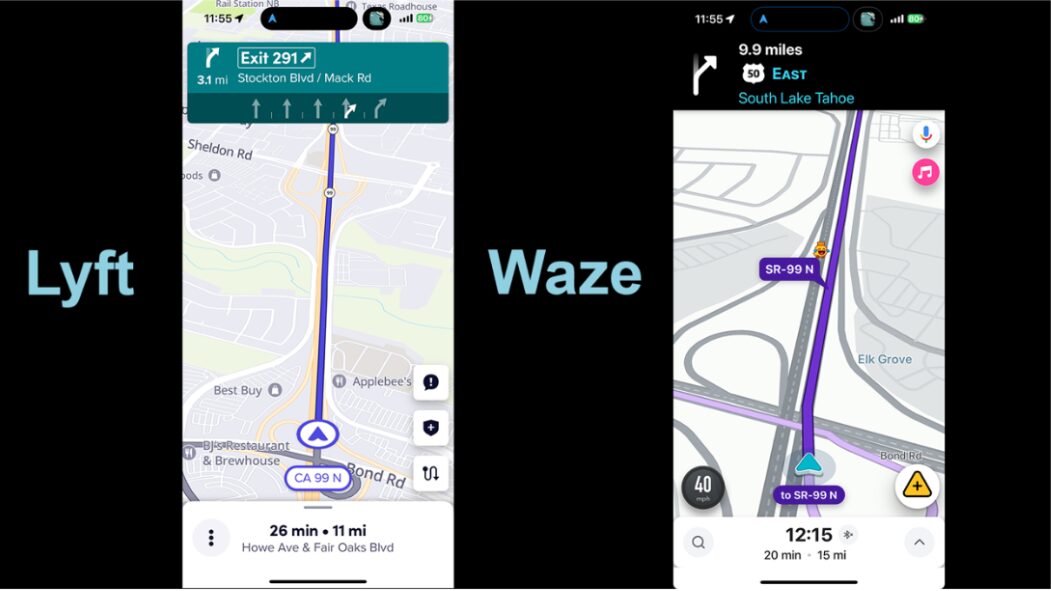
One of Uber’s standout features is the option to choose Waze as your preferred GPS navigation system.
Lyft defaults to its own GPS, but experienced drivers know that Waze is often better at finding shortcuts and rerouting around traffic jams.
Waze also has a more driver-friendly interface that displays critical information, such as the speed limit and upcoming turns, making navigating through congested urban areas much more straightforward.
In the comparison above, these screenshots were taken at the same time. Lyft has a bad habit of directing drivers to side streets instead of freeways.
This strategy takes up valuable time. As you can see, six minutes is a big difference. I often type in the Lyft destination into Waze and use Waze anyway.
If Lyft allowed drivers to integrate Waze, it would be a game changer, especially in big cities where traffic patterns can shift quickly.
Giving drivers more control over their navigation tools ensures they can provide faster, more efficient service to passengers while minimizing stress behind the wheel.
4. Provide Better Compensation For Scheduled Rides Cancelations
Uber’s reserved rides are a great feature that guarantees a particular pay level, even if the passenger cancels.
While Lyft offers scheduled rides, they often come with more stringent conditions and don’t always compensate drivers adequately when a ride is canceled at the last minute.
If Lyft adopted Uber’s model of 75% pay on cancellation for reserved rides, it would give drivers more confidence in accepting these bookings.
Drivers invest time and fuel in getting to the pickup location, and being compensated for last-minute cancellations is only fair. Uber’s model better respects the driver’s time and effort, and Lyft should follow suit to keep drivers happy and productive.
5. Give Us More Screen Space For The Map
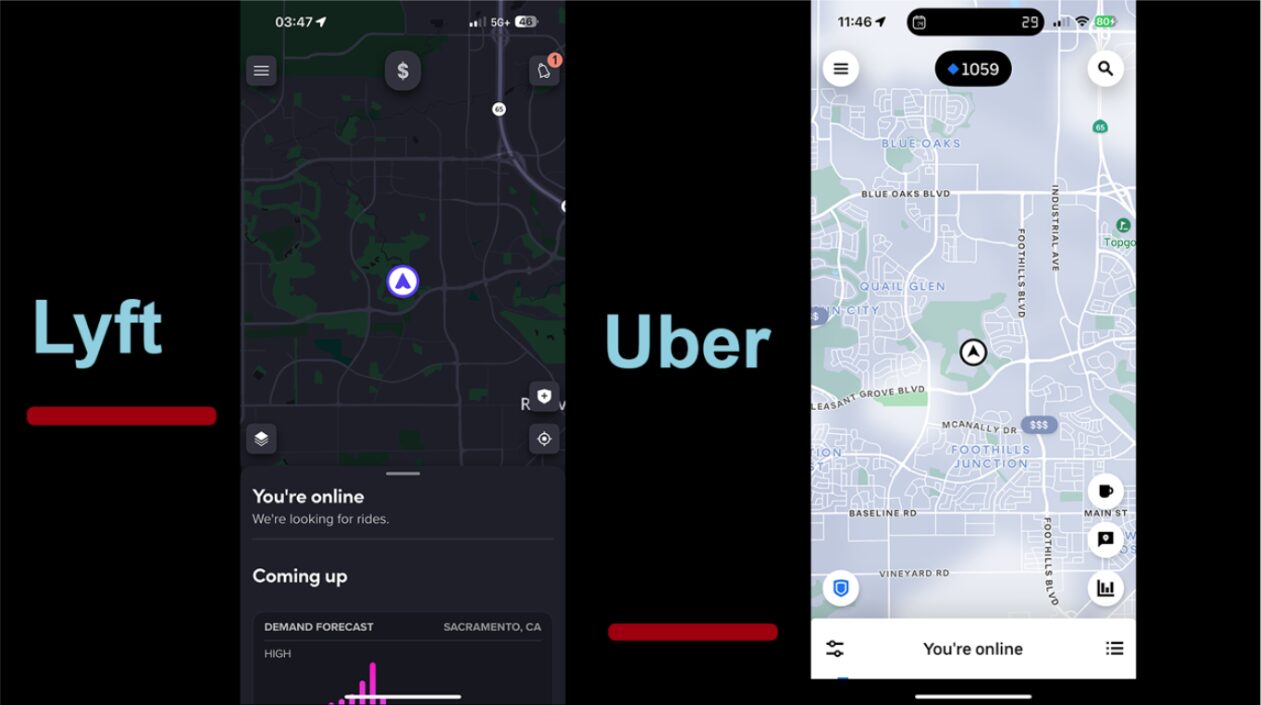
One area where Uber excels is in providing a more streamlined and spacious app interface for drivers.
Uber’s app design allows more information to be displayed simultaneously without cluttering the screen.
In contrast, Lyft’s app can feel cramped, with essential details sometimes buried behind multiple taps or screens. As you can see in the image above, the red line indicates the amount of space Lyft provides for the map.
Contrast that with Uber, which provides significantly more. This design flaw can make it harder for the Lyft app to quickly see essential information like ride requests, passenger locations, or surge pricing.
If Lyft improved its app design by giving more screen space and reducing clutter, it would make it much easier for drivers to stay on top of their tasks. A cleaner, more user-friendly interface can lead to more efficient driving and boost earnings.

FREE CHECKLIST
Get Your Car Ready to Maximize Profits
What Uber Can Steal From Lyft
1. Reduce Your Withdrawal Fee Back To 85 Cents
Don’t we at least deserve this?
Given that we can all see that driving for Uber and Lyft is more challenging now than ever before, why jack up the withdrawal fees?
I just learned from the “Show Me The Money Club” that Lyft will be following suit. Believe me, if Uber had not raised its fees, Lyft would not be raising its fees.
Instead, both companies will charge $1.25 per withdrawal next year. My rule is not to withdraw until the withdrawal fee is half a percent of the total.
For example, next year, when both are at $1.25, or $2.50 per withdrawal, I would not withdraw until my total was at least $250. Generally, I withdraw every two days for $600. It may seem like pennies, but these little fees add up over time.
This issue, as much as anything in this article, shows you how little Uber and Lyft care about the driver. We can’t even get paid without them taking a little bit for themselves.
2. Five Minute Wait Time Is Enough!
At one point, Uber allowed drivers to collect a cancellation fee after waiting five minutes at a pickup location.
However, Uber increased this to seven minutes, significantly reducing the fees drivers can collect. I rarely wait seven whole minutes.
I leave after four minutes for Uber and stick around for five minutes for Lyft.
Why? If someone shows up after five minutes, there is no way we will have a pleasant ride. I should drive away.
On the other hand, Lyft still adheres to the five-minute rule, which gives drivers fairer compensation for their time when passengers don’t show up.
Uber should consider reverting to the five-minute rule to respect the driver’s time and prevent them from losing out on potential earnings.
Or, charge the passenger a $2 per minute fee after two minutes. Then I will wait and know I earn $60 per hour while waiting.
Waiting around without compensation is frustrating and cuts into a driver’s hourly rate, making it harder to hit income goals.
3. Provide Auto-Accept Feature For New Rides
Lyft’s auto-accept feature allows drivers to automatically accept incoming ride requests without manually approving each one.
This feature is safer for the driver and a great time-saver, especially during busy periods when rides come in rapidly.
Uber doesn’t currently offer this feature, so drivers must constantly monitor their phones and hit “accept” before they miss a ride.
This demand for our attention can be distracting and cumbersome when focusing on the road.
If Uber added an auto-accept feature, drivers could streamline their workflow, stay more focused on driving, and reduce the stress of juggling ride requests and notifications while behind the wheel.
4. Show Earnings Per Hour
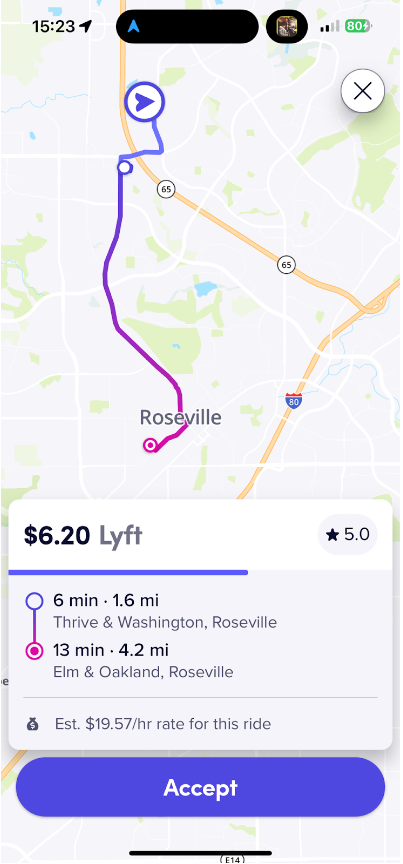
Lyft’s app has a helpful feature that shows drivers their average hourly earnings on each ride before they accept the ride.
This can be an excellent tool for evaluating whether a particular ride is profitable or if it’s time to decline. Unfortunately, Uber doesn’t provide this kind of real-time insight. Drivers are left to mentally calculate their earnings, which can be tedious and inefficient.
As you can see above, I can quickly determine that this is not a ride I would accept. I need a minimum of $25, and preferably above $30.
If Uber adopted Lyft’s hourly earnings display, it would make it easier for drivers to assess their productivity and make informed decisions about when to keep driving or take a break.
This transparency would help drivers maximize their earnings while minimizing downtime.
5. Add Stay-In-Area Destination Filter
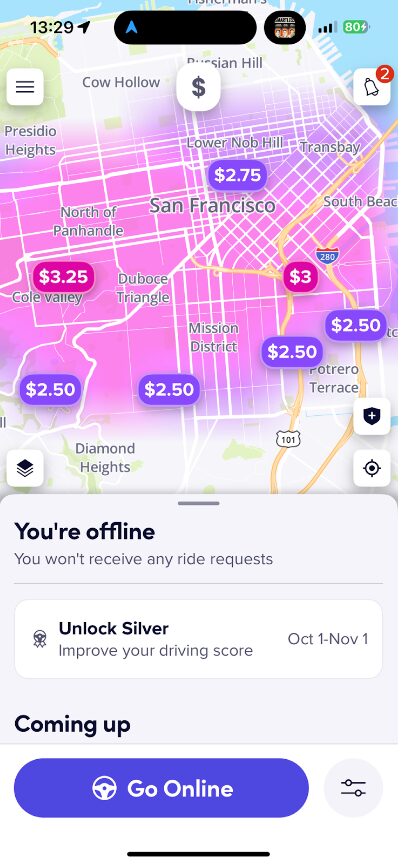
Lyft offers a destination filter that allows drivers to stay within a specific geographic area.
This is particularly useful at the end of a shift when you’re trying to head home but still want to pick up a few fares along the way. Uber’s destination filter is more rigid and doesn’t allow as much flexibility in staying within a desired area.
In the example above, I drove to San Francisco for a short 90-minute shift. I had to pick up my brother at SFO at a specific time and could not take any rides outside this area.
Therefore, I set up a Stay Within Area filter with a five-mile diameter.
It was beautiful.
I picked up six rides in 90 minutes, all within the San Francisco area, and made a quick $60.
If Uber improved its destination filter to match Lyft’s, drivers would have more control over where they drive. They could optimize their shifts by staying in familiar areas or gradually going toward home without missing out on potential rides.

Key Takeaways
Uber and Lyft have their strengths, but both platforms could be better.
By borrowing key features from each other, they could enhance the driver experience and improve overall efficiency.
Whether it’s better pay structures, more precise navigation tools, or more innovative app design, these tweaks could make a difference for drivers who rely on these platforms for their livelihood.
As rideshare drivers, we deserve the best tools and features to help us succeed. Hopefully, Uber and Lyft will pay attention.
Be safe out there.
